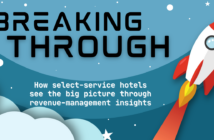Slaying the supply-chain dragon
Business is back, and people traveling again. According to the WTTC, the U.S. travel and tourism sector is forecast to exceed the 2019 peak this year. That’s great news. But, for franchisees hoping to open new hotels in 2023 or planning a technology refresh, their doors may remain closed due to lingering supply chain issues. Even when a hotel is shiny and new or its rooms and public areas had a sizeable facelift, there won’t be occupants without Wi-Fi and a strong network infrastructure.
For anyone who spends time working with the brands, management companies, or operators, it’s common to hear the same stories again and again. Franchisees are struggling because the supply chain is broken. As soon as developers break ground, operators begin ordering all FF&E, capital goods, and infrastructure components, rather than staggering them across the construction plan. This can be a big drain on the bottom line with no guarantee of speeding the delivery process.
To overcome supply chain issues, some franchisors have been willing to risk equipment delays – though detrimental to guest satisfaction and revenues – or have accepted partial orders to get a few floors connected. But, neither piecemeal nor non-existent Wi-Fi will cut it. If guests don’t have consistent, lightning-fast connectivity wherever they roam, they’ll leave and never come back.
THE INVENTORY MYTH
One of the biggest myths today is that network inventory isn’t readily available. FALSE. Operators can order and receive the necessary networking equipment, including wireless access points, LAN switches, WLAN controllers, and bandwidth-management gateways, immediately from a single source provider – along with all the peripheral technologies that create connected guest and employee experiences, such as in-room entertainment (e.g., TV casting), cloud telephony/VOIP solutions, safety/panic buttons, mobile guest apps, in-room voice assistants, and more. The right provider will simplify the purchasing process, reduce supply chain complexities, streamline operations, and solidify the buyer/seller relationship.
Here are five benefits of working with a single source for upgrading or planning for new properties:
1. ALWAYS-AVAILABLE INVENTORY
One of the most important things a technology partner can provide today is available inventory. Hoteliers need assurances equipment is readily accessible to cover any contingencies or emergencies that may arise, such as a sudden surge in occupancy or an existing conference group bringing event technologies that need to connect with the hotel’s network. With individual and group business rapidly returning, a 52-week lead time to wait for networking equipment is simply not acceptable. In addition, hoteliers may be able to negotiate better pricing for available inventory based on the volume of solutions purchased for their hotel or enterprise.
2. SERVICE ACCOUNTABILITY
When dealing with multiple vendors, there often is a lack of accountability. It can be challenging to determine who’s responsible for managing issues as they arise. When working with a single source, the buck stops there. One person is accountable for ensuring proper communication, product delivery, and resolving issues promptly. This reduces the time and effort spent troubleshooting issues and ensures equipment arrives on time and is always up and running.
3. PRODUCT QUALITY AND CONSISTENCY
When inventory comes from one company, it’s easy to know exactly what will be delivered, how it works, and that it will connect with other on-premises peripheral solutions. Product consistency is crucial, especially when replacement equipment is needed, giving customers peace of mind that the same devices arriving now be the same devices arriving in the future. This cuts down on labor costs as on-site maintenance and IT teams never need retraining when deploying additional inventory. A single-source provider may also offer integrated solutions that work together seamlessly, reducing the need for manual data entry and other labor-intensive tasks.
4. IMPROVED COMMUNICATION
Human error exists, especially when multiple sources are involved. Working with a single provider reduces the risk of miscommunication between vendors, the hotel, MSP, etc. It’s a much simpler process to track equipment and follow procedures when working with one technology provider.
5. COMPREHENSIVE TECHNICAL SUPPORT
Hotels typically require ongoing support and maintenance of their technology stack, especially when it comes to behind-the-scenes networking equipment. Having a provider responsible for providing technical support ensures issues are resolved promptly, as teams are trained collectively on the same solutions.
When looking for a technology partner, it’s important to come prepared and know the right questions to ask to help make smart buying decisions. Here are a few examples:
- What solutions do you offer, and how will those solutions help my hotel overcome specific business challenges?
- Do you have established and open APIs for easy connectivity to other in-demand solutions on the market?
- What is your support model?
- How do you ensure data security and guest privacy?
- What is your pricing model?
Don’t let supply chain challenges stop a property opening or push back a planned upgrade. Partner with a technology provider with available inventory that can simplify their procurement process, reduce supply chain complexities, and streamline their operations.





